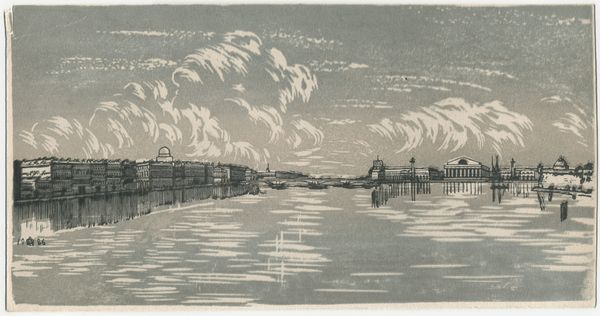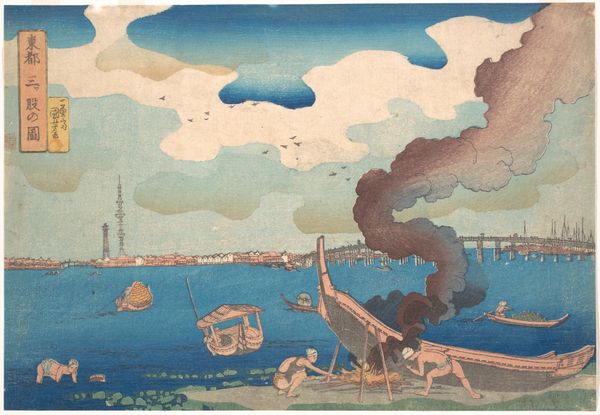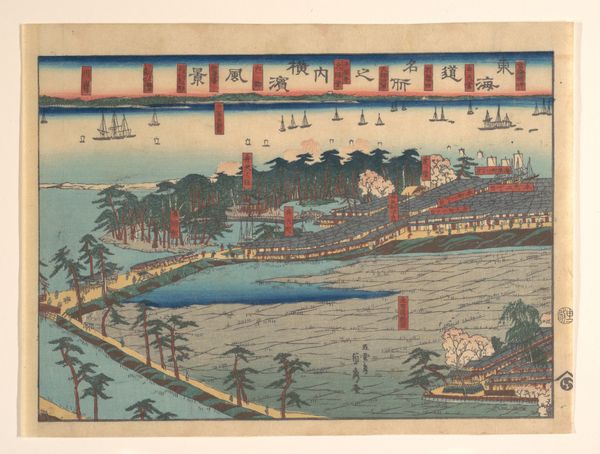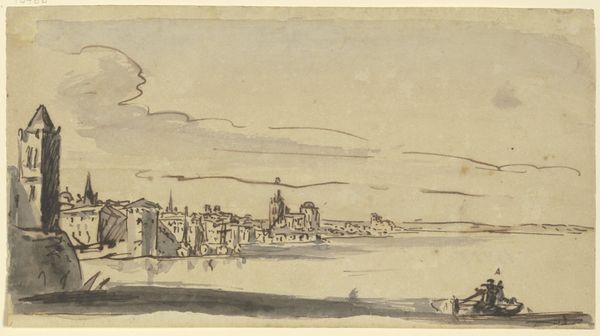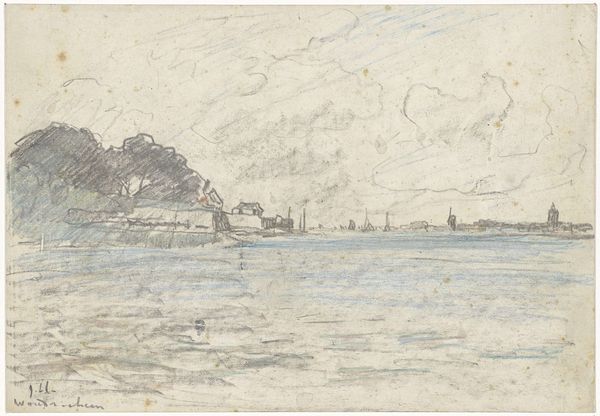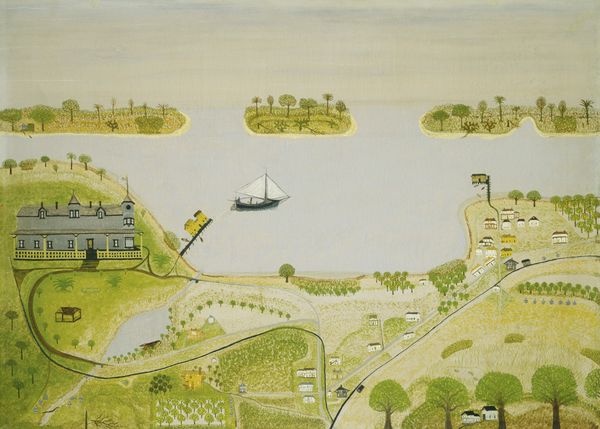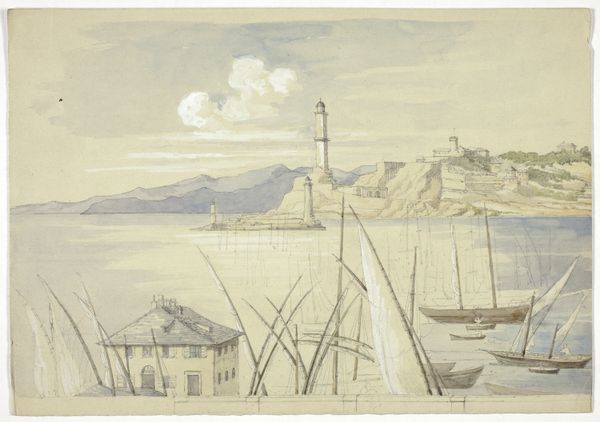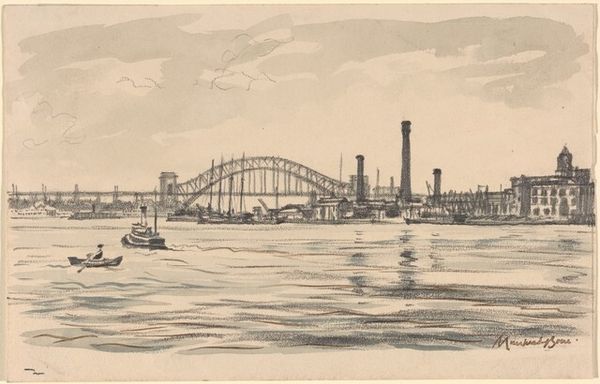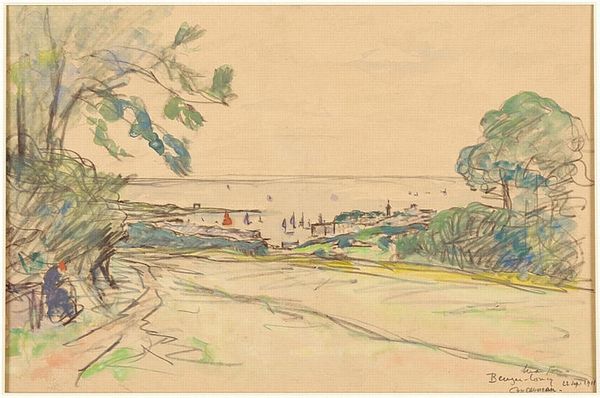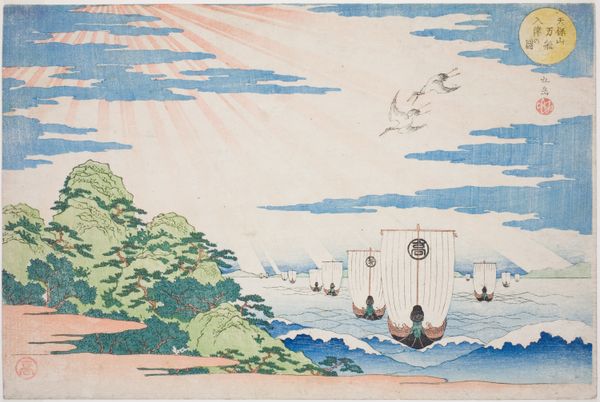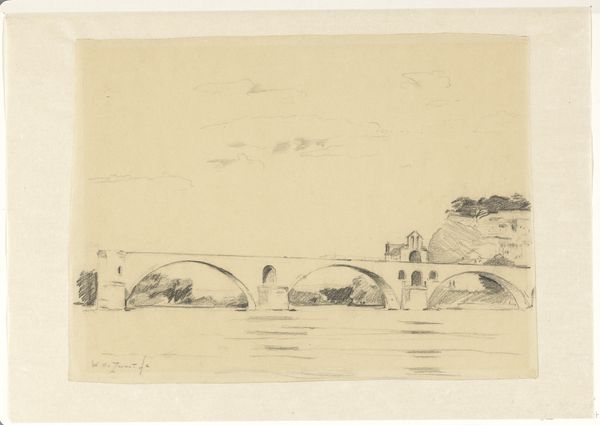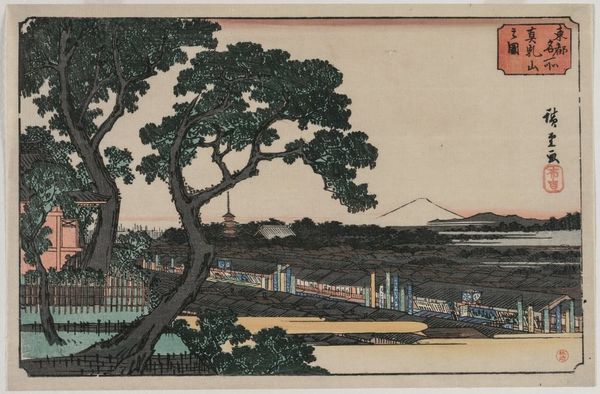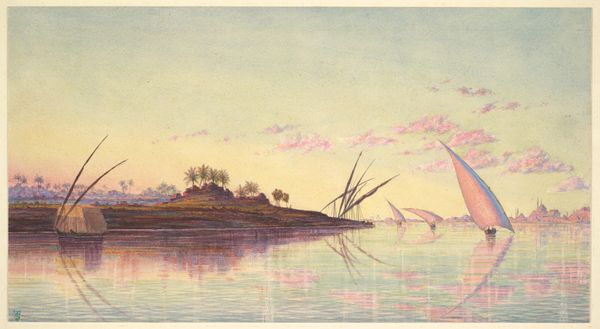
View of Ryogoku Bridge in the Eastern Capital 1800 - 1830
0:00
0:00
print, watercolor, woodblock-print
# print
#
asian-art
#
landscape
#
ukiyo-e
#
watercolor
#
woodblock-print
#
cityscape
#
genre-painting
Dimensions: H. 10 1/4 in. (26 cm); W. 14 1/2 in. (36.8 cm)
Copyright: Public Domain
Editor: Here we have Shotei Hokuju’s "View of Ryogoku Bridge in the Eastern Capital," a woodblock print from around 1800-1830. I find the bustling street life depicted in the foreground so compelling. What stories do you think this piece is telling? Curator: I think Hokuju is using this seemingly simple cityscape to reveal the layers of Edo society. How does the bridge, as both a physical structure and a symbolic connector, facilitate—or perhaps complicate—social interactions and economic disparities? Consider who is using that bridge, and who benefits most from it? Editor: So you're suggesting it's not just a pretty scene but a commentary on social structures? Curator: Absolutely. Ukiyo-e prints like this, while seemingly depicting "the floating world" of pleasure and leisure, also captured the realities of class, gender, and labor. Notice the composition, how the bridge literally arches over and perhaps dominates the figures below. How does that visual hierarchy reflect power dynamics of the time? Editor: That's a great point. I was so focused on the everyday details I didn’t think about power. Is the inclusion of the cityscape an indication of something, such as political status? Curator: Exactly! Think about the rapid urbanization of Edo during this period and the impact of policies on different communities. Genre paintings serve as historical records but also tools of cultural commentary, engaging with debates about modernization, tradition, and the lived experiences of diverse populations. Editor: I see. So, appreciating the print involves unpacking those social layers and thinking about the people within this setting, rather than simply appreciating the artistic style or technique. Curator: Precisely. By understanding the socio-political context, we can engage more meaningfully with the artwork and connect it to contemporary conversations about inequality, access, and representation. Editor: I’ll never look at a landscape print the same way again! It's fascinating to consider art as a reflection and critique of society, not just as aesthetic beauty.
Comments
No comments
Be the first to comment and join the conversation on the ultimate creative platform.
